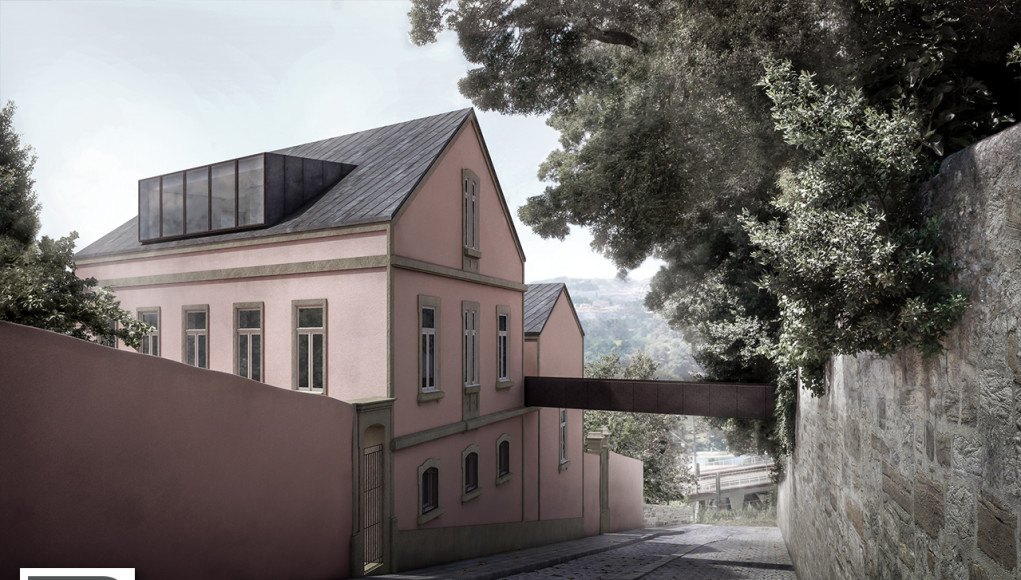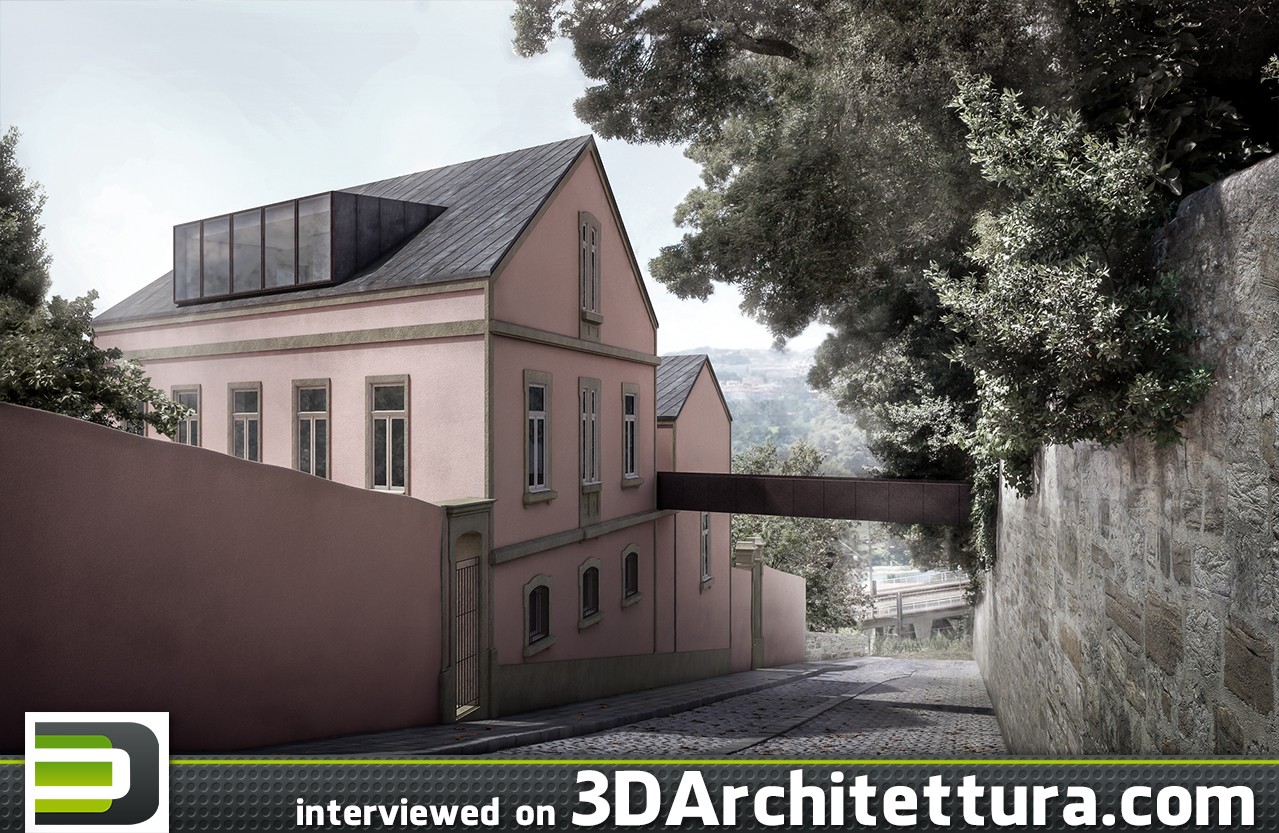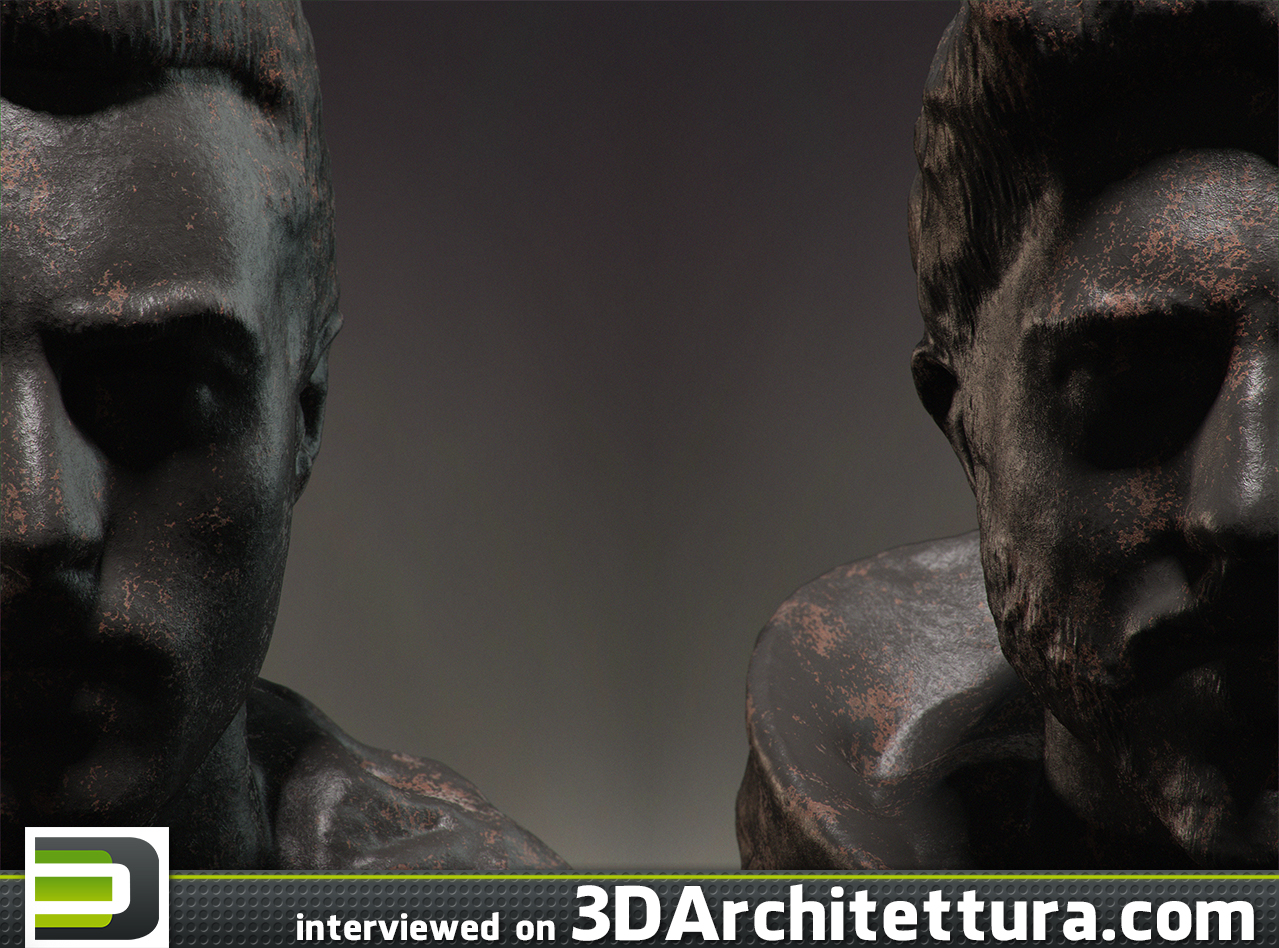To obtain photorealism, remember: everything in this world has a certain imperfection: color, reflection, geometry, placement or all of them.
Hugo Ferreira & Pedro Teixeira
Country: Portugal
Age: 28 & 27
Job: Architect & Product Designer
Website: www.okdraw.net
SocialMedia: www.facebook.com/okdrawstudio
Why have you decided to work in 3d-field? When have you started? Where did you study?
Okdraw is essentially two people with different backgrounds, we are an architect and a product designer with different paths. We both started in the 3d field around the year of 2007, as an extra to our academic and future commercial work, since Visual 3D is a very important part of the architecture and product design area. After that we got interested in knowing more and getting better at what we were doing, and the interest in this area is something that is earned with projects and experience. We started to learn through tutorials, and eventually we wanted to learn a little more, so we did a 3d course at E.S.A.D. in Oporto, Portugal.
What is your usual workflow? Which plugins and software you use? Do you make all the project yourself or delegate some parts of it?
We mostly work on the Arch-Viz area and until now and we always did all the work by ourselves. We start by analyzing the CAD plans we received from the client, after that we look for some inspiration on some architect photographers that we admire, then we begin to define the cameras and composition of each image. When we have all that set, if possible, we go to the terrain of the project to do some photographic survey, so we can have a reference of the site and to use for post-production. Then we just do the old polygon modeling, we create the light based on the location and time of the day we want, some times we create materials, but most time we stick to our personal materials library. After that we just render and do some post-production to obtain some details that would take too much time on the 3D. For the software we use 3ds Max 2014 and Vray 2.4, photoshop cs6 and Lightroom 5.3. For the plugins we mostly use forest pack pro, floor generator and multi-texture.
What your consider most important in creating photo-realistic lighting and materials? Any advice for the students just starting to learn 3D?
The one thing we think it’s the most important when it comes to photo-realistic images, is to know that everything in this world has a degree of imperfection, whether it is on the color,reflection, geometry, placement or in all four at the same time. There’s a couple of other things you have to keep in mind, that will make the materials and lighting more realistic: You always have to look to photographers for inspirations, as their work is the photo-realistic example you’re looking for. Your 3d model should be as real as possible, starting with the scale of it. Make your light real, using skylight, a sun, real light measurements like lumens, and real light files like IES. Always try to use a physical based camera that can simulate the way a real camera function, giving you a better notion about exposure, ISO, white balance, etc. Finally, try to shoot like a photographer, try to learn about composition as that will considerably boost the look of your image.
Do you have any personal know-how for creating photo-realistic vegetation and plants?
We would probably say that the know-how we have is gathered from tutorials and a lot of time looking to real life vegetation. Sometimes we need to take a step back, go outside and really take a look at the way the vegetation and the real world behaves.
With the information we gathered, we were able to notice that most times the vegetation is more desaturated and darker than what we initially think. We also noticed there’s a lot of randomness on the size, rotation, location and appearance of all vegetation and plants. So we usually use forest pack pro, we select a couple of models from each type of vegetation present on the existing location of the project and enable random variation in scale, rotation and placement of each object. We also learned recently a neat trick, which is to enable the use of forest color to have variations of tint on the diffuse color of each element of the vegetation. This really adds lot of realism to your scene, because you no longer have one unique shade of green along your grass, or leaves for example.
What are your plans for the future? What forecasts you can make about the future of 3d-world in general?
Our plans for the future are mostly about getting better and collaborating more on other countries, or with companies from places outside Portugal. The one thing that we love the most about this job, is the ability to be in our home town and making a realistic render of a place a hundred kms away, where we’ve never been before. It’s almost like traveling with your imagination and creativity.
About the future of the 3D World, we think that the future will be mostly about progressive rendering such as Iray, corona, Vray RT, Octane render, Keyshot, etc. We’ve already seen some introduction and improving to progressive render in the past, but right now Render software’s like Corona are really making a statement in the 3D area. Everyday we see more and more people using Corona and getting great results.

 Russian
Russian


























